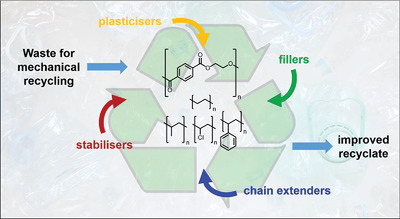I have seen the PowerPoint slide too many times.
Another perfect circle adorned with cheerful arrows.
“Take-Make-Dispose becomes Take-Make-Use-Return,” the chief sustainability officer explains to nodding heads – mostly the same nodding heads on the same conference circuit. The room smells of expensive coffee and cheap promises.
The circular economy has become the corporate world’s favourite bedtime story, replete with a soothing narrative that lets us sleep peacefully while the world falls apart.
Eventually, you outgrow the pacifiers – at least, you should. But the circle is broken. Truthfully, it was always broken.
Some of us who built careers around this beautiful idea can finally admit it.
The premium pricing problem
The circular economy faces a fundamental economic challenge documented across industrial ecology research: it works beautifully for expensive things bought by affluent consumers.
Patagonia can create a circular jacket because customers paying $400 care about impact. But try making a circular Happy Meal toy when your margin is in pennies. A 2023 study in Sustainable Production and Consumption found that consumers’ willingness to pay for circular products yields premiums of up to 50% above conventional alternatives. These premiums only function where consumers prioritize sustainability over cost, and few do.
This creates structural inequality.
Analysis of circular economy success stories reveals a pattern; most celebrated examples involve premium brands with sufficient margins to absorb higher production costs – companies such as Patagonia, Stella McCartney, and Fairphone operate in markets where sustainability commands premium pricing.
The circular economy’s dirty secret?
Billions of products operating on razor-thin margins cannot absorb circularity’s true cost without fundamental business model transformation.
Physics does not negotiate
Entropy always wins.
It does not care about comforting environmental philosophy. It does not care about conference presentations and cheese-and-cracker queues. It manifests physics.
The material science is unequivocal: thermoplastic polymers degrade with each thermal recycling cycle through a process called chain scission. Research published in Macromolecular Rapid Communications explains how mechanical properties such as impact strength decline as polymers degrade during reprocessing.
This is not “downcycling” to sound better — it is thermodynamic reality. Each cycle produces material with reduced tensile strength, increased brittleness, and compromised performance.
The numbers from peer-reviewed research are disheartening:
We built economic theory around ignoring basic physics. As documented in ScienceAdvances’ landmark “Production, use, and fate of all plastics ever made” study, we have optimized for polished narratives over thermodynamic reality.
The infrastructure that never was
The infrastructure required for true circularity does not exist – and likely never will.
There are seven main plastic resin types, but thousands of additives, colorants, and composite formulations that contaminate recycling streams. Research in Resources, Conservation and Recycling found that contamination rates in mixed plastic streams reach 30-40%, rendering material economically unrecyclable.
Sorting and back-hauling remain the cyanide of recycling economics. Building real circular infrastructure would require co-ordination across supply chains, standardization across industries, and decades of investment while the linear economy offers immediate returns with existing infrastructure, meshing perfectly with quarterly guidance calls.
There are no incentives that enforce the long-term thinking of sustainability over short-termism.
What actually killed the circle?
The circular economy died from the same disease killing most sustainability initiatives: the chasm between aspiration and incentive.
We create metrics measuring activity rather than outcome. We celebrate pilots while ignoring system requirements. We confuse marketing with mathematics.
Most of all, we never solved the fundamental contradiction: in a growth-based economy, circularity is incompatible with increasing throughput.
A truly circular system would slow consumption, not accelerate it. And you cannot finance that. This is why circular initiatives focus on recycling rather than reduction, efficiency rather than sufficiency, green growth rather than growth limits.
The circle is a convenient distraction to avoid confronting consumption itself.
What smart companies do next
The circular economy is dead, but a regenerative economy framework is emerging as an alternative approach – though largely theoretical and lacking large-scale implementation.
Scaling regenerative models faces hurdles including high upfront investments and value-chain co-ordination, as seen in food-industry transitions, but successes in regenerative agriculture demonstrate potential through cross-sector changes such as policy incentives and farmer training.
Kate Roworth’s seminal work, Donut Economics, provides strong context for the state of the circular economy and prospects for a regenerative one. Instead of pretending infinite consumption is sustainable through better engineering, regenerative thinking focuses on systems designed to restore rather than simply sustain – systems that improve with use, create more than they consume, and build resilience rather than efficiency.
This is not about making the linear economy circular; it is about making the entire economy biological. A system designed like living systems that solved sustainability through billions of years of optimization.
Without PowerPoint slides.
The companies exploring this transition will not perfect the circle – they will abandon it entirely.
The real opportunity
Three sectors are moving beyond circular thinking:
Materials innovation: Bio-based materials made from plants, fungi, and microbes that replace petroleum derivatives. The sector has grown substantially, with projections suggesting continued expansion as production costs decline through technology breakthroughs. These materials do not just replace fossil fuels. They can regenerate soil systems and capture carbon during production. Recent 2025 advancements – e.g., regenerative blue economies for ocean restoration – illustrate scaling potential beyond land-based systems.
Service transformation: Platform businesses in which durability directly drives profitability, eliminating planned obsolescence incentives.
- Patagonia’s Worn Wear program operates North America’s largest outdoor gear-repair facility, processing approximately 50,000 pieces annually while generating significant revenue from resale. It is so successful, they are boosting it substantially.
- Fairphone achieved 103,053 unit sales in 2024 with their modular smartphone design, with lifecycle analysis showing potential CO2 reductions of up to 95% for specific modules when refurbished parts replace new components.
- Interface Inc.’s Mission Zero achieved 96% reduction in greenhouse gas emissions (among other notable achievements) while saving an estimated $450 million from avoided waste costs by shifting from carpet sales to service-based flooring solutions.
Regenerative manufacturing: Biomimetic production processes guided by natural principles. Research published in Sustainability suggests that Industry 4.0 be guided by biomimetic principles can advance sustainable production goals, using nature as the only functioning example of sustainable production on Earth. While biomimetic approaches are promising, scalability requires addressing governance and capacity-building gaps, particularly in regions such as Africa, where regenerative pilots show economic resilience but need broader policy support.
Next strategic moves
If you are still investing in circular economy initiatives, you are optimizing yesterday’s solution for tomorrow’s problem.
The companies that capture value in the next decade will not be those perfecting waste management. They will be those eliminating waste itself.
The regenerative economy framework promises something the circular economy never could: systems aligned with natural processes in which consumption becomes creation, waste becomes wealth, and business becomes biology. However, realizing this at scale demands overcoming barriers including financial transitions and ecosystem measurement tools.
Unlike circular thinking that focuses on efficiency and waste minimization, regenerative economics work to account for social costs and values traditionally unaccounted for, enhancing the resiliency of economic systems through cross-scale circulation of resources and information.
The circular economy promised we could have our cake, recycle it, and eat it, too. It lied.
Regeneration promises something better.
But, first, we need to stop pretending PowerPoint circles override thermodynamics.
Physics does not negotiate.
Entropy does not compromise.
Neither should we.
(Richard LeBlanc, BIG Media Ltd., 2025)





![31st Oct: Pinkfong Super Rescue Team (2022), 3 Episodes [TV-Y7] (6/10)](https://occ-0-1508-92.1.nflxso.net/dnm/api/v6/Qs00mKCpRvrkl3HZAN5KwEL1kpE/AAAABU68IC1zf1rrHpm35A3mJVe6kxDESs7jE0zVr1lg8LNRRH_wiGM_ojrTP8Hop0cRxaRXZI1nsCevI8-hLSACDJWovxXlg8eGrihKeLpt9V6QoK1oUsTC59-OiLx3c_jb_D1TWdbkWPeu2RqBSTuA-Ban5nuiyjlyjcIN0C5IOZQwmQ.jpg?r=c45)





